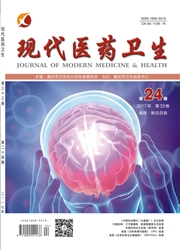

 中文摘要:
中文摘要:
目的探讨糖尿病足溃疡的病原菌感染分布及耐药性。方法对79例糖尿病足患者创面分泌物进行病原菌培养和药敏试验结果分析。结果 79例患者分泌物标本中有65例培养出病原体101株,其中革兰阳性球菌32株(31.7%),革兰阴性杆菌66株(65.3%),真菌2株(2.0%),革兰阳性杆菌1株(1.0%);革兰阳性球菌对万古霉素、利奈唑胺均敏感,革兰阴性杆菌对亚胺培南、美罗培南均敏感,对加β-内酰胺酶抑制剂的抗菌药物敏感性高。结论糖尿病足溃疡的病原菌感染以革兰阴性杆菌为主,多重感染病例较多,应加强耐药性监测,指导临床医生合理使用抗菌药物。
 英文摘要:
英文摘要:
Objective To investigate the distribution of the pathogens infection of diabetic foot ulcers and to analyze their drug-resistance. Methods The wound surface secretion specimens from the patients with diabetic foot in our hospital were collected for conducting the pathogen culture and the drug susceptibility test. Results Among 79 secretion specimens, 101 strains of pathogenic bacteria were cultured in 65 cases,in which 32 strains (31.7%) were Gram-positive bacteria,66 strains (65.3%) were Gram-negative bacteria. All Gram-positive cocci were sensitive to vancomycin and linezolid. All Gram-negative bacilli were sensitive to imipenem and meropenem,and highly sensitive to antibacterials with beta-lactamase inhibitor. Conclusion The pathogenic infection of diabetic foot ulcers is mainly Gram-negative bacilli, and more cases are multiple infection. Drug resistance monitoring should be strengthened to guide clinicists rational use of antibiotics.
 同期刊论文项目
同期刊论文项目
 同项目期刊论文
同项目期刊论文
 期刊信息
期刊信息
